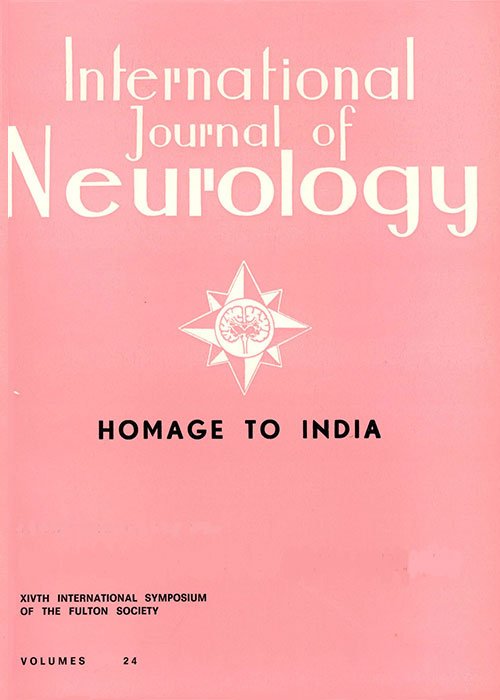Full Issue
DOI:
https://doi.org/10.62486/ijn199044Abstract
The combined issue (Numbers 1–2–3–4) of Volume 24 of the International Journal of Neurology (1990) was dedicated to Homage to India, serving as a cultural and historical tribute rather than a conventional scientific volume. Edited and curated by Víctor Soriano, it reflected the journal’s long-standing tradition of honoring nations that have made significant contributions to science, philosophy, and humanism, linking the neurological sciences with broader reflections on civilization and intellectual heritage.
The issue opened with “New Delhi: The Eternal City,” a contemplative essay celebrating India’s capital as a symbol of continuity between antiquity and modernity, where ancient spiritual traditions coexist with scientific progress and cosmopolitan vitality. The piece evoked India’s role as a crossroads of philosophy, medicine, and consciousness studies, resonating with the journal’s interdisciplinary spirit.
A central section was devoted to “Mohandas Karamchand Gandhi,” honoring the moral and intellectual legacy of the Mahatma. The article portrayed Gandhi not only as a political leader but as a thinker deeply concerned with human behavior, ethics, and the psychology of nonviolence, themes closely aligned with the journal’s humanistic dimension and its attention to the neurological and emotional bases of compassion, restraint, and social consciousness.
The volume concluded with the customary sections of News and Book Reviews, maintaining the journal’s continuity as an academic publication while offering an introspective pause between scientific series.
Overall, this issue of IJN stood out as a philosophical and cultural homage, celebrating India’s enduring contributions to science, spirituality, and the understanding of the human mind. It symbolized the bridge between neurology and the humanities, a hallmark of Víctor Soriano’s editorial vision.
Downloads
Published
Issue
Section
License
Copyright (c) 1990 International Journal of Neurology (Author)

This work is licensed under a Creative Commons Attribution 4.0 International License.
The article is distributed under the Creative Commons Attribution 4.0 License. Unless otherwise stated, associated published material is distributed under the same licence.







